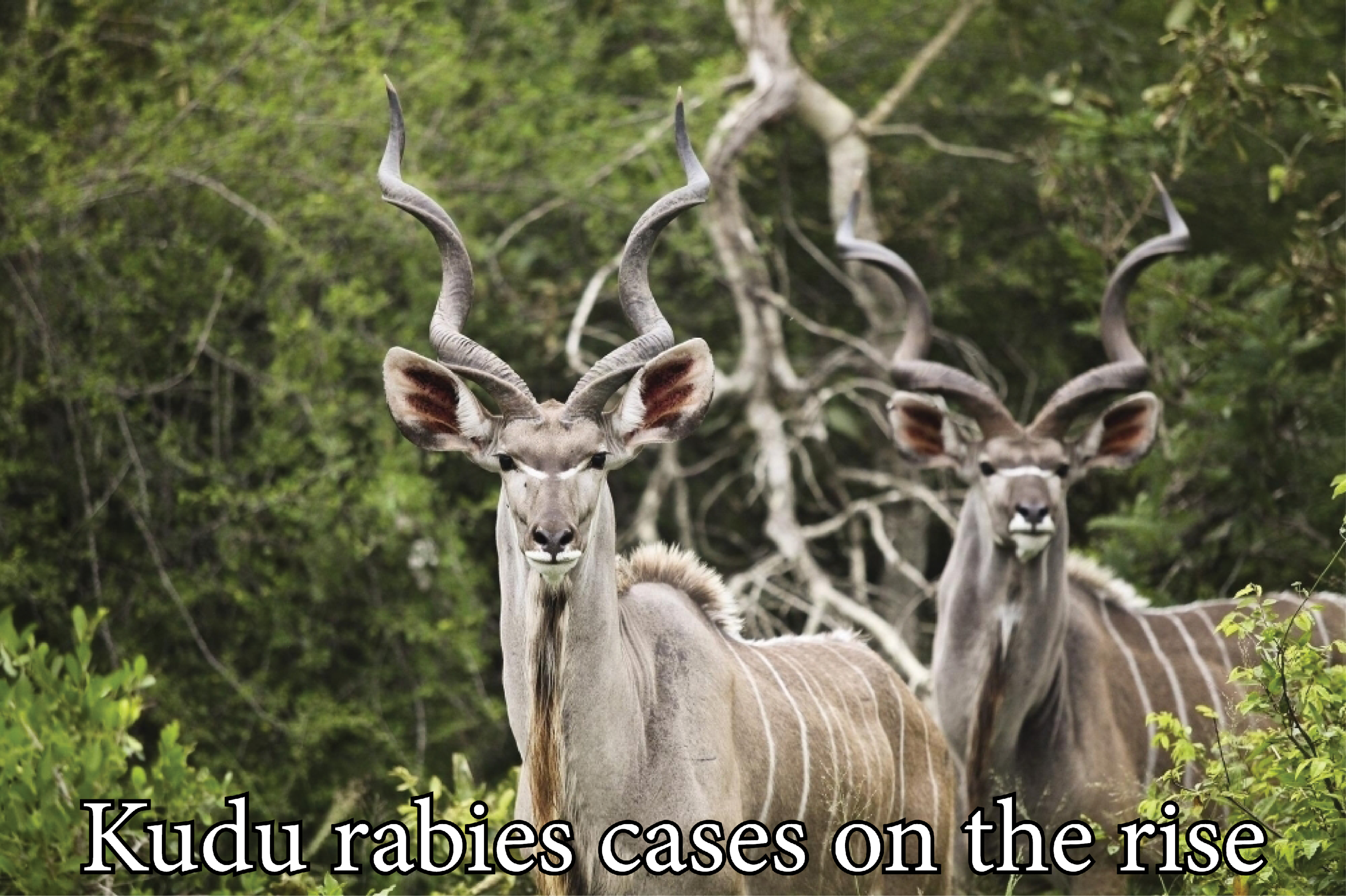Report suspected cases -Where possible, the affected animal should be euthanised and the carcass isolated, the union said. Ellanie Smit
Increasing cases of rabies among kudus have been reported in the past few weeks.
According to the Namibia Agricultural Union (NAU), it should be noted that rabies is a notifiable disease according to legislation, regardless of the animals affected – whether it is cattle, dogs, jackals or wildlife.
The union said any suspected cases must be reported to the nearest state veterinary office.
“This is of utmost importance and is enforced according to the Animal Health Act. Failure to report is considered a crime.”
The NAU said where possible, the affected animal should be euthanised and the carcass isolated.
“The head should be sent to the central veterinary laboratory as soon as possible for analysis of a brain sample.”
The directorate of veterinary services has the necessary funds to carry out these actions, it added.
“Anyone dealing with suspected cases of rabies should apply the utmost caution by wearing protective equipment.”
The rabies virus is transmitted through direct contact, such as through wounds or mucous membranes of the eyes, nose or mouth, with infectious tissue or fluids.
Infectious tissues or fluids include tears, nerve tissue, saliva and respiratory fluids. It should be noted that rabies is a disease that is transmissible from animals to humans.
Symptoms such as staggering, paralysis, excessive salivation and unprovoked aggression are indicative of rabies infection. The disease is particularly vicious in species like cats and honey badgers, which may attack humans without provocation.
The outbreak often begins unnoticed but can escalate quickly, leading to significant mortality in affected populations.
This pattern of spread is particularly devastating in communal settings, such as nature reserves, where close proximity facilitates transmission among animals.
Interestingly, the spread of rabies to predators is less common due to the nature of the virus and the behaviour of infected prey. However, instances of rabies decimating groups of social carnivores in nature reserves have been reported, illustrating the indiscriminate threat posed by this disease.



